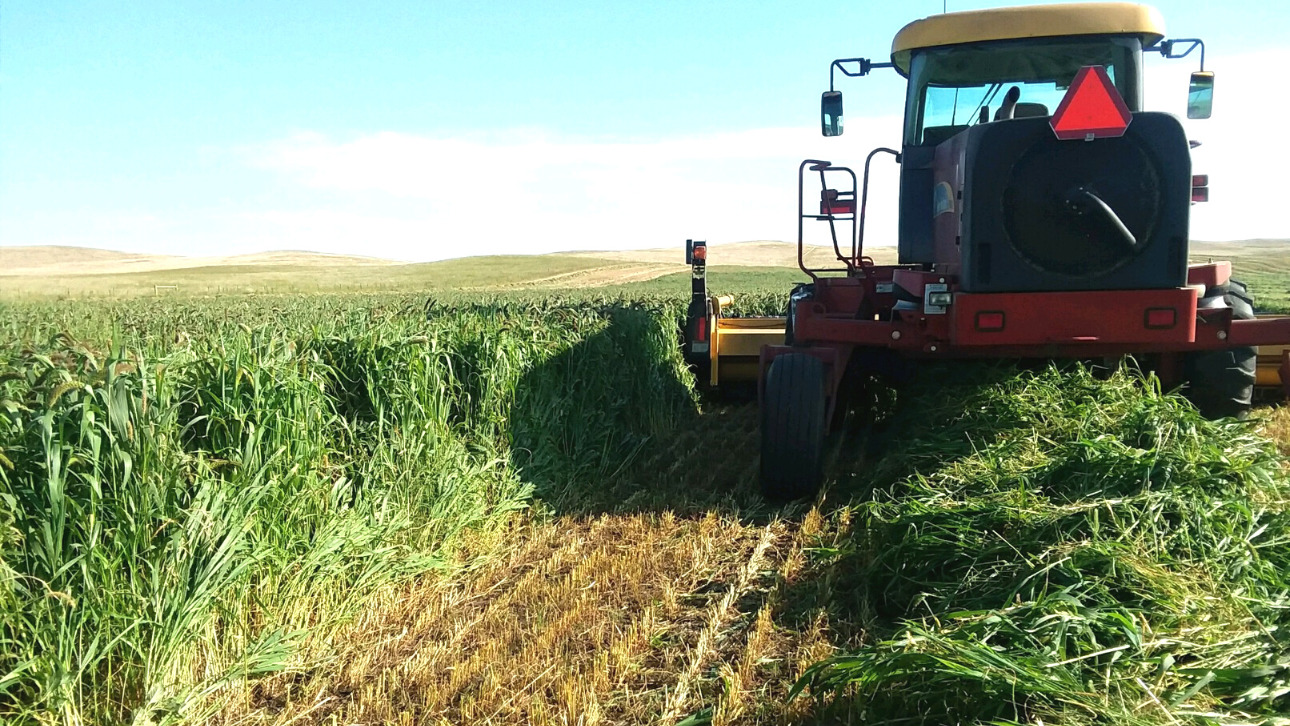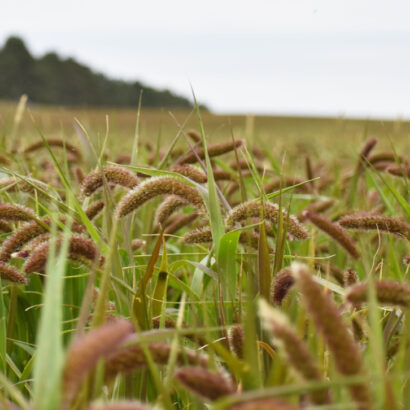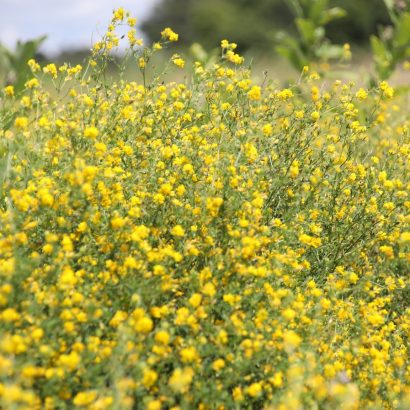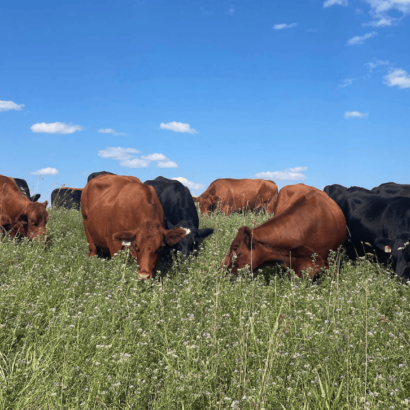As winter draws on, many livestock producers (myself included) take a look at the forage stockpile for the coming months, and “hope” we have enough to make it through the winter. Even if you have enough forage for winter, there likely won’t be much left in reserves when the winter comes to an end. So, now is the time to create an efficient plan for rebuilding your dry hay stockpile for the coming year.
There are a few things to consider when you’re trying to create as much dry hay as possible:
- Time of planting and harvest
- The type of ground you’re planting into
- Quality vs quantity.
Of all these, the most important factor to consider is timing. The timing of planting and harvest both make a big difference when it comes to creating high yielding and high-quality dry hay.
Start With Cool-Season Annual Forages
Cool-season annual forages present the first opportunity to get forages in the ground every year. The most popular options in this class are small grains: oats, forage barley, and spring triticale. These crops allow you to create the most forage possible within one growing season, and they can be planted as early in the spring as the field is fit – you don’t need to wait for a specific ground temperature to ensure a successful crop.
Time to plant maturity is one of the main differences between these forage options:
- Forage barley – 65 days
- Forage oats – 75 Days
- Spring triticale – 85 days.
This is a very important factor if you’re trying to double crop your acres.
Then, Factor In Warm-Season Annuals
Warm-season annual forages are C4 type grasses that need heat to grow, and they’re usually the highest yielding options. These types of grasses need to be planted into warm soil (65 degrees and trending warmer) to germinate and thrive. The most common options for dry hay in this class are hay millets, teff, and sudangrasses. These grasses are often double cropped following a cool season forage, maximizing your production potential. However, they can be a little tougher to dry down, so watching the weather around harvest time is very important.
Don’t Forget Winter Annuals
Winter annual forages are the last forage opportunity to plant in a year. These are usually a winter annual small grain. Rye, forage winter wheat, and winter triticale are the most common options. Usually, these forages are planted early in the fall, and then harvest mid to late spring the following year. This gives you the opportunity to get your planting done before spring next year, and then harvest the crop earlier than others in the following year. There are some slight differences in maturity amongst these crops, but they also present a great opportunity to double crop.
- Rye – harvest in late May
- Winter triticale – harvest in early June
- Forage winter wheat – harvest in late June
Factor In Soil Type
The type of ground you’re planting into is another very important item to consider when creating your forage plans, and moisture is generally the most import factor to consider. If you’re planting a crop in low areas that are susceptible to getting or staying wet, a water-tolerant crop like forage barley or Japanese millet is probably your best option. Japanese millet is a warm-season grass, usually planted in late May or early June. It has great water tolerance and has even been known to grow in standing water.
If the ground you’re planting into is known for drying out, German or white wonder millet are the most popular options. If you can get these crops established, they’re well known for being able to grow through very dry conditions. Sudangrasses would also work in dry conditions.
Dry acres often present the option to double crop. Planting an oat or spring triticale early and following it with a hay millet has proven to be a very high producing system on ground that can otherwise be tough to manage.
Most Importantly, Consider Your Goals
The last (but arguably the most impactful) factor to consider is your cropping goals. The goals usually involve creating as much tonnage as possible, or trying to create some high quality hay. Timing harvest to be before the crop is fully headed is one way to influence forage quality, but there are some species that just create higher quality forage than others. The highest quality cool season forage is forage barley, but it will give up some tonnage to oats or triticale. Likewise, teff grass, German or white wonder millet will be higher quality than Japanese millet or sudangrasses, but they usually give up a little tonnage in comparison to some lower quality options.
Get Expert Input
Your goals for your forage crop won’t be the same as your neighbor’s, so your cropping plan shouldn’t look the same as your neighbor’s, either. Get in touch with one of our experts to create a custom forage plan that fits your operation.





Discussion
0 Comments